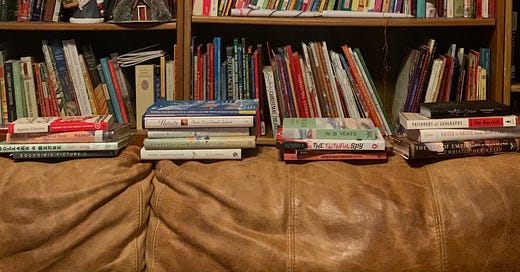Not so very long ago, before Christmas, I sat down to figure out why all of my best laid plans were not coming to fruition with my oldest daughter’s schedule. We have a very smooth and carefully constructed time table that takes all.the.things into account. We have a one drive folder where every lesson plan is stored in labeled folders according to child. I have three kids who are working mostly on their own (this story is about the older two) and my son has no issues rolling back and forth between the time table and the one drive folder, accomplishing what is asked of him and producing the results I am looking for. Done and done. My oldest daughter, though, not so much. They are 12 months and two weeks apart and most of their education has happened side-by-side. They have waded through my own growth along side me as I learned how to do this Charlotte Mason thing. And this year, we started high school with my oldest. In true homeschool fashion, she has a piece-mealed schedule that meets her needs in very intentional ways but also requires a bit of fancy dancing to make work every week. She is doing two classes at the local high school (a 10 minute walk down the road from us) first thing each morning which means she starts back into her work at home after she returns. She usually goes to school, comes home, does her chores, and then steps into the home-student role about 11-noon. This gives her about three hours of work time before she is off to soccer practice. I began to realize we weren’t getting much done during that time and the weeks were passing without books getting read.
So, back to the drawing board it was and after weeks of observing over Christmas break and talking to her about her learning and her schedule, I realized she could just be getting overwhelmed by all the details. There were too many steps for her to easily process in order to accomplish her goals and so we eliminated those steps from the schedule. We kept the timetable and the books but we left the detailed descriptions of what to do alone.
I pulled out all the books she needs to read for her second term and I asked her to put them into four days. 3 hours allows for three-four books plus physics and her daily work like spelling and poetry reading. She sorted them into four stacks and I asked her to type it out in a text message and send me the new schedule. We high-fived and that was that. Full schedule. So simple.
I got a text message that looked like this (We use the Alveary for our curriculum so many of these books came directly off their booklist.):
TUESDAY:
Agatha Christie, Murder on the Orient Express
Stalin-Russia’s Man of Steel
Dollars & Sense
God’s Big Picture
W.B. Yeats
Written Narration 2
WEDNESDAY:
Peter Pan-or the Boy Who Would not Grow Up
Posterity/The American Spirit
Fearfully and Wonderfully: The marvel of God’s Image
Mere Christianity-C.S. Lewis
W.B. Yeats
Written Narration 2
THURSDAY:
The Faithful Spy
Farewell to Manzanar
World War II History for Teens
W.B. Yeats
Agatha Christie-Murder on the Orient Express
Written Narration 2
FRIDAY:
Life of Jesus
Prisoners of Geography
Writer to Writer
Peter Pan-or the Boy who Would not Grow up
End of Empire-Attila the Hun and the Fall of Rome
W. B. Yeats
Written Narration 2
Yesterday she came home from school, went to her cabinet, retrieved her Tuesday pile of books and got right down to it. She didn’t have to open up spreadsheets or folders on any devices. She didn’t have to flip through piles of instructions. And she finished all her required work.
Charlotte Mason talks a lot about how learning doesn’t begin until the student owns the process and the more I wrap my mind around how truly individual an education can be, the more I appreciate how her wisdom can play out in a child’s development. At the high school level, it is ok, and probably really important, for each child to have an individually tailored time table. One that they can cognitively understand *and operate* on their own. I always thought that once I figured something out, it would work for the whole family. I consistently planned a family schedule and it worked beautifully until the older kids hit junior high. Once more individual effort was required of the kids themselves, I began to see my one-size-fits-all model break down.
But the Charlotte Mason method is a resilient way of teaching and it makes room for modification based on individual need. There are always things you give up when you simplify the schedule, namely access to more information. You have to fight the fear of missing out. But, the gains in ownership and confidence for the child doing the work themselves are far superior to the loss of specific detail.
Cara Williams 2024





Thanks for sharing! It confirms what we too have been realizing with our 14 year old daughter.